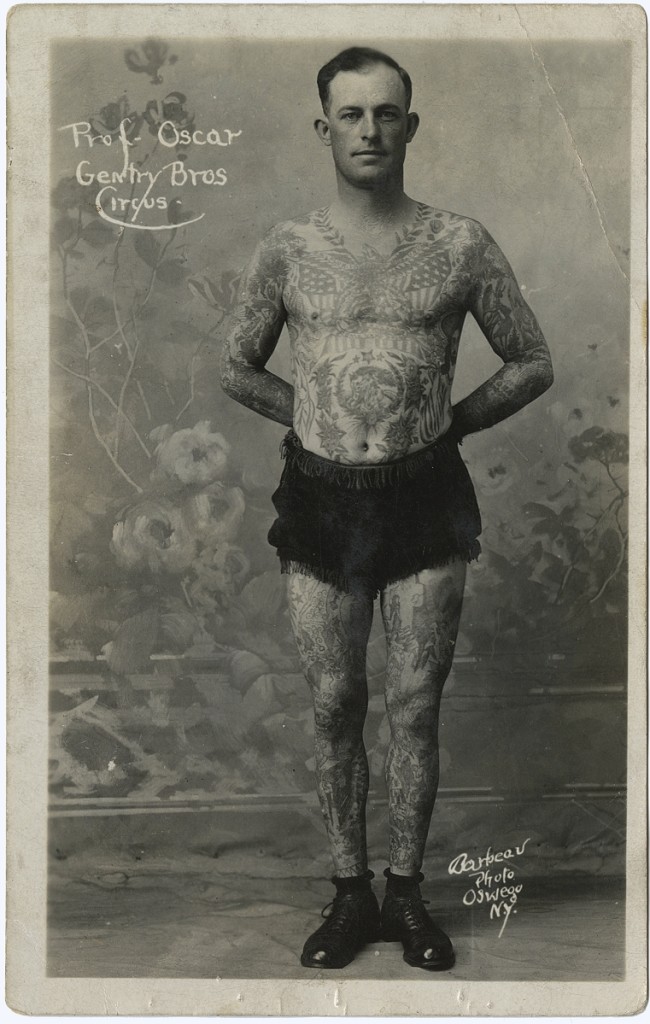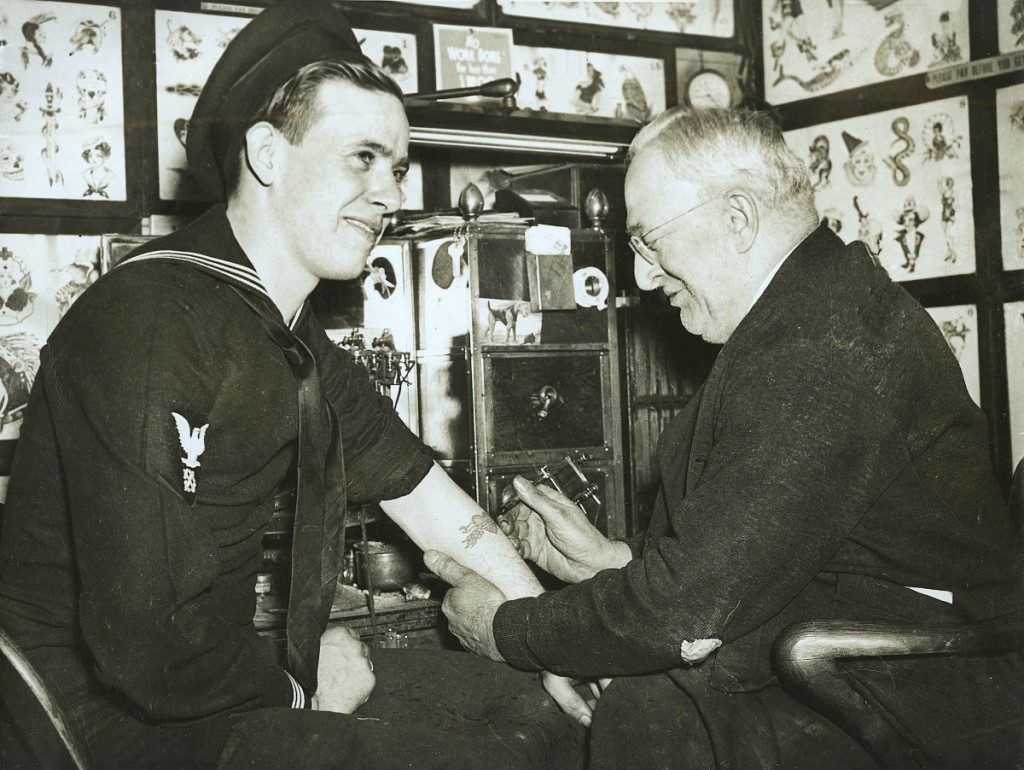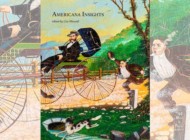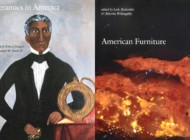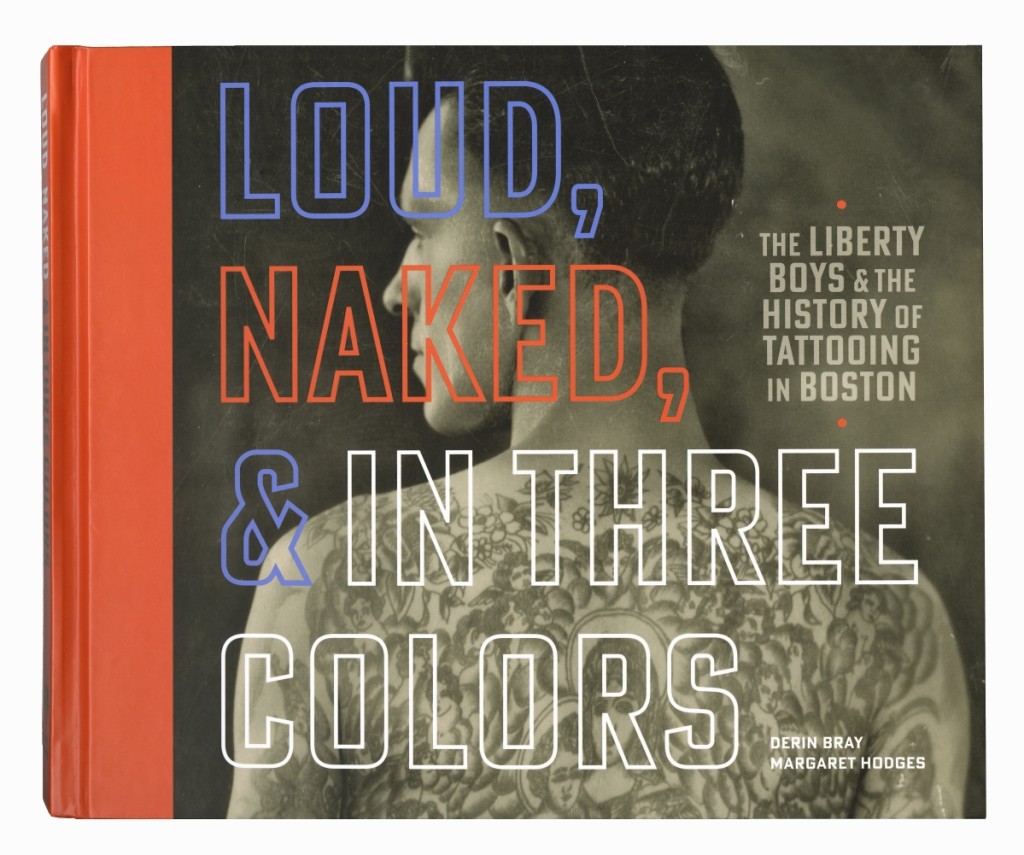
Loud, Naked, & In Three Colors: The Liberty Boys & The History Of Tattooing In Boston, available at www.rakehouse.com.
By Greg Smith
BOSTON – While cities like Los Angeles, Detroit and New York City tout credibility as hubs for Twentieth Century tattooing, a new title by Derin Bray and Margaret Hodges inserts the city of Boston and its acclaimed Liberty family onto that shortlist. Loud, Naked & In Three Colors: The Liberty Boys & The History Of Tattooing In Boston is the latest title from the authors, which takes a deep dive into the dynamic tale of the Liberty boys and their monopoly in Scollay Square, the city’s red light district in the first half of the Twentieth Century.
“There is a lot of information washing around online,” Hodges told Antiques and The Arts Weekly. “Oral histories or speculative statements proliferate – this is what passes for tattoo history. Derin and I decided that we want to do a correction, to show that tattoo artists can be researched in the same way that Eighteenth or Nineteenth Century craftsmen are.”
The result is 160 full color pages, including 700 newly discovered designs painted by the Libertys, Ben Corday, Frank Howard and Ed Smith, as well as 70 illustrations of never-before-seen photographs, business cards, tattoo machines, shop signs and more. All wrapped in a graphic hard cover and published by Rake House, a company the authors founded to control the process and publications going forward.
The book, released in November 2020, had its beginnings more than six years ago. “When we began, we asked around with tattoo historians who have been doing this for many decades,” Bray said. “We were told very quickly that nothing from Boston survived. We didn’t accept that and we tracked down the descendants of the Liberty family of tattoo artists. It took a long time for them to warm to us. Over months and years, they slowly revealed things that had been tucked away in garages, attics and photo albums. The pile grew, they had the most extraordinary material, things that haven’t been seen in 100 years.”
Another source was Lyle Tuttle, a legendary California tattoo artist and historian. Beginning in the 1940s, Tuttle formed a vast collection of tattoo art and memorabilia, among it much of the material from the Liberty family elder, Edward or “Dad.”
Boston tattooing begins not with the elder Liberty, but really with Frank Howard, the famed late Nineteenth Century Tattooed Man who toured with Barnum & Bailey’s Greatest Show on Earth. More than just an object to behold, Howard would tattoo others, deal in mail-order tattoo supplies and set up shop in Boston’s Scollay Square, where he also performed for Austin & Stone’s Dime Museum.
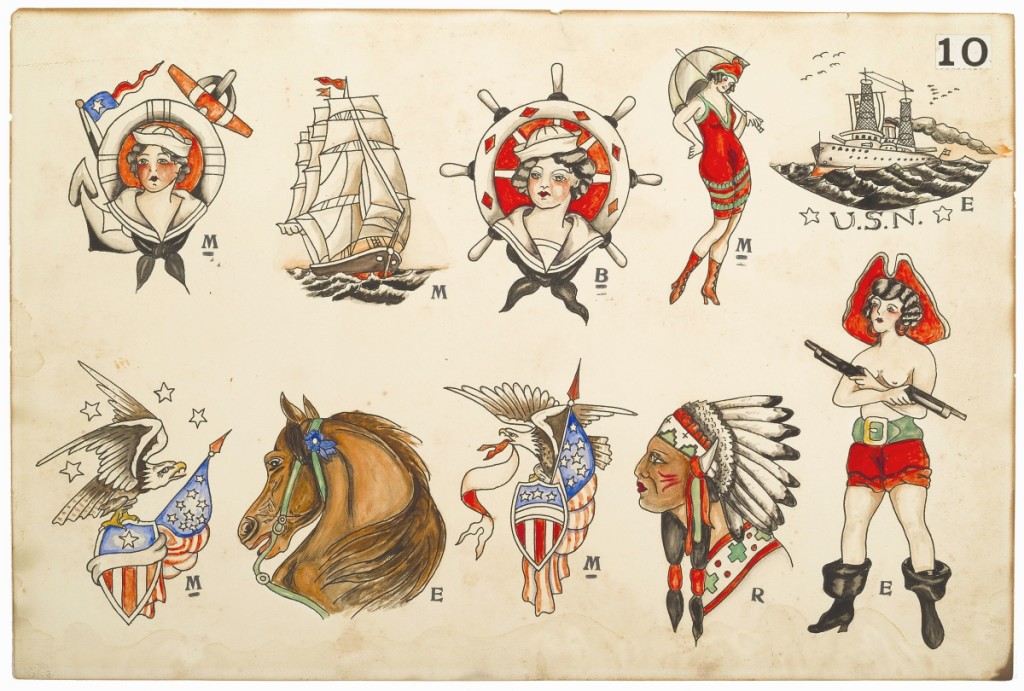
Tattoo designs painted by Edward “Dad” Liberty or his wife Lena, Boston, circa 1930. Ink and watercolor on paper, 12 by 17 inches. Courtesy of Jared Hook.
Dad Liberty began tattooing in Lowell, Mass., in 1910 in a shooting gallery that he and his brother operated. It was Liberty’s talents as a machinist that would earn him credibility among tattooists.
“He develops a reputation in the tattoo world as a machine builder, which was a coveted skill because tattoo machines were not easy to come by,” Bray said. “He was embraced by other tattoo artists because he did a fair amount of traveling from the West Coast and back. He took all that knowledge and reputation and used it to build up his shop as well as his sons’.”
After Howard died in 1925, Dad Liberty took over his shop in Scollay Square, inheriting one of the earliest collections of flash art known. Over the next 40 years, Dad would earn renown while his three sons followed in his footsteps. By the end of World War II, both he and each of his sons could be found operating their own individual shops footsteps away from each other in the square, forming a monopoly on tattooing in the city.
A dynasty was born but it would not survive. In 1962, Massachusetts outlawed tattooing on the basis of medical purposes, calling it a “crime against the person,” a law that would remain in effect until 2000. The roustabout Scollay Square was leveled soon thereafter and developed under the auspices of urban revitalization. The Liberty boys dispersed.
Loud, Naked & In Three Colors tells the full story of the Liberty boys, from their earliest beginnings to the closing of Scollay Square and through to the end of their respective careers. While a rich resource on historical flash art and related objects, Bray and Hodges’ research is elevating as it brings a once-discounted art medium to the doorsteps of the American art world with a reasonable demand for entry – hereby granted.
Loud, Naked & In Three Colors is available in hardcover at www.RakeHouse.com for $70 plus applicable taxes and shipping.

